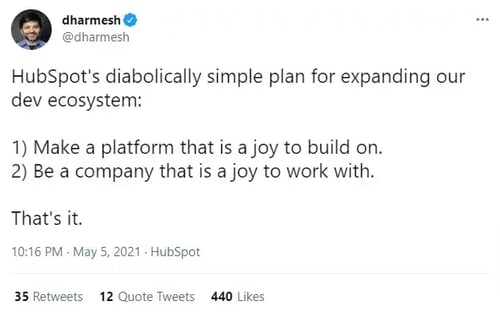What questions should I ask a potential co-founder?
Last updated: 5 August 2024. Co-founder disputes are among the most common causes of early-stage startup failure, so your choice here is among the...
Manage your equity and shareholders
Share schemes & options
Fundraising
Equity management
Start a business
Company valuations
Launch funds, evalute deals & invest
Special Purpose Vehicles (SPV)
Manage your portfolio
Model future scenarios
Powerful tools and five-star support
Employee share schemes
Predictable pricing and no hidden charges
For startups
For scaleups & SMEs
For larger companies
Ideas, insight and tools to help you grow

Founders are often the best storytellers in a business. They have the sharpest view of the mission, the clearest understanding of customers, and the strongest stake in the outcome.
Too often, though, founder content gets stuck. Great ideas stay in private journals, voice notes, or off-the-cuff Slack messages instead of becoming the fuel for blogs, LinkedIn posts, podcasts, or press.
The problem is often more about structure than inspiration. It’s structure. Without a pipeline, founder content stays ad hoc, reactive, and unsustainable. With one, you can scale thought leadership without burning the founder out.
In this article, we’ll reveal how to turn raw founder insight into a repeatable flow of content.
The days when only brand accounts did the talking are gone.
Today, founder-led content is one of the most effective ways to:
LinkedIn data shows that posts from individuals get 2x more engagement than company accounts on average.
According to Edelman’s Trust Barometer, 63% of people trust ‘a person like me’ over company messaging.
Audiences don’t just want polished PR. They want to hear directly from founders.
Founder content tends to fall into the same traps, no matter how visionary the leader.
Unstructured idea
Ideas come thick and fast, in board meetings, customer calls, or late-night Slack rants.
Without a way to capture these ideas, they stay scattered across notebooks and inboxes.
Over-edited content
In the rush to make content professional, the raw founder voice gets ironed out.
What starts as a bold take ends up as bland copy. Audiences don’t want another corporate blog, they want the sharp, human perspective only a founder can give.
Unsustainable content
Many founders go through bursts of output. They write thought pieces during fundraising or post on LinkedIn daily after a big launch.
Then the day-to-day grind takes over. The result is silence, which kills momentum and credibility.
Too dependent on the founder
Without a pipeline, everything depends on whether the founder has the time and energy to create. That’s risky.
As the company scales, so do demands on their schedule. Without delegation and systems, content production collapses.
These bottlenecks cost more than missed social posts. They create:
The result is that founder content becomes a sporadic nice-to-have, rather than a consistent growth lever.
The solution is to treat content like any other part of the business, with systems, delegation, and measurement. That’s where the pipeline comes in.
Think of this as a simple four-step system.
Founders are idea machines. The trick is catching those ideas before they vanish.
Not every raw note becomes a blog post, but many can be sharpened into content.
Founders should focus on thinking, not formatting. Build a small team or outsource parts:
The founder remains the voice, but the pipeline does the heavy lifting.
Founders don’t need to be everywhere, but they need to be consistent.
Treat this like product development. Capture feedback, test formats, and double down on what works.

These aren’t isolated bursts, they’re the result of building repeatable systems around founder ideas.
Founder-led storytelling works best in a culture where everyone feels part of the mission. When employees own a stake in the business, they don’t just amplify the founder’s voice, they live it.
That’s where Vestd comes in. Our platform makes it simple to set up and manage employee share schemes, turning employees into genuine ambassadors for your story.

Last updated: 5 August 2024. Co-founder disputes are among the most common causes of early-stage startup failure, so your choice here is among the...

Last updated: 5 August 2024. Together with cash flow issues and insufficient market need, co-founder conflict is one of THE biggest contributors to...

Last updated: 19 April 2024